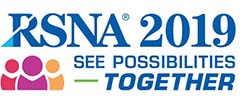

ParticipantsAimilia Gastounioti, Philadelphia, PA (Abstract Co-Author) Nothing to Disclose
Roshan Santhosh, Philadelphia, PA (Abstract Co-Author) Nothing to Disclose
Lauren Pantalone, BS, Philadelphia, PA (Abstract Co-Author) Nothing to Disclose
Christopher G. Scott, MS, Rochester, MN (Abstract Co-Author) Nothing to Disclose
Stacey Winham, PhD, Rochester, MN (Abstract Co-Author) Nothing to Disclose
Kathleen R. Brandt, MD, Rochester, MN (Abstract Co-Author) Nothing to Disclose
Karla Kerlikowske, MD, San Francisco, CA (Abstract Co-Author) Nothing to Disclose
Celine M. Vachon, Rochester, MN (Abstract Co-Author) Nothing to Disclose
Emily F. Conant, MD, Philadelphia, PA (Abstract Co-Author) Grant, Hologic, Inc; Consultant, Hologic, Inc; Grant, iCAD, Inc; Consultant, Advisory Panel, iCAD, Inc; Speaker, iiCME
Despina Kontos, PhD, Philadelphia, PA (Presenter) Research Grant, Hologic, Inc
aimilia.gastounioti@uphs.upenn.edu
PURPOSETo investigate racial differences in breast parenchymal patterns extracted from full-field digital mammography (FFDM) screening studies using deep learning, while also accounting for differences in age, body-mass index (BMI) and breast density.
METHOD AND MATERIALSWe analyzed a random sample of FFDM studies from 2000 self-identified African-American (AA) and 2000 Caucasian women, who underwent routine mammographic screening (Selenia Dimensions, Hologic Inc.) at our institution between September 2010 and December 2014. A deep learning model (ResNet-34 architecture) was built to learn mammographic phenotypes differentiating AA from Caucasian women, using all four standard mammographic views of the raw (i.e., 'FOR PROCESSING') imaging data from each FFDM study. To evaluate the ability of the deep-learned mammographic phenotypes to identify differences in parenchymal patterns between AA and Caucasian women while also testing for potential confounding, three Random Forest classification models were evaluated using an 80%-20% train-test split-sample approach and inputs from: (1) the deep-learned mammographic phenotypes alone, (2) the deep-learned mammographic phenotypes combined with potential confounding variables such as age, BMI, and automated area-based and volumetric percent density measures estimated with the Volpara software (v1.5.3, Volpara Health Technologies), and (3) these potential confounding variables alone. The area under the curve (AUC) of the receiver operating characteristic on the independent test set was used as performance metric to measure the ability to classify the two races based on the features evaluated.
RESULTSThe performance of the deep-learned mammographic phenotypes alone was significant (AUC = 0.88, p<0.05), while combining them with age, BMI and Volpara density did not change the performance (AUC = 0.88). Substantially lower race classification capacity was demonstrated when age, BMI and Volpara density were evaluated alone (AUC = 0.69, p<0.05).
CONCLUSIONDeep learning elucidated racial differences in mammographic parenchymal phenotypes, which can only be partially explained by factors such as age, BMI and breast density.
CLINICAL RELEVANCE/APPLICATIONDifferences in parenchymal phenotypes may provide new insight on racial disparities in breast cancer's onset age and outcomes, as well as the need for adjusting breast screening guidelines by race.